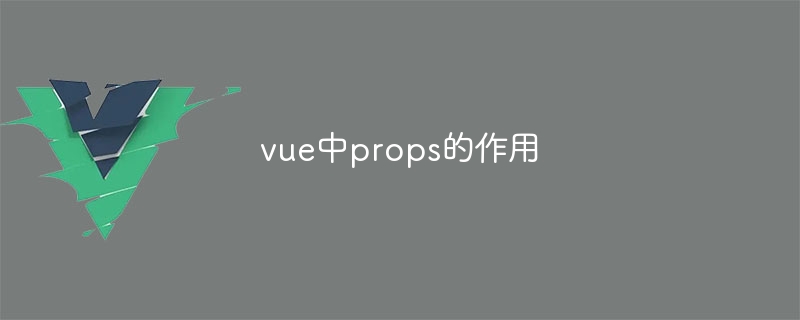Home >Web Front-end >Vue.js >The role of props in vue
The role of props in vue
- 下次还敢Original
- 2024-05-02 21:24:57908browse
The role of props in Vue.js is to pass data, isolate data, improve reusability, and perform type checking. Steps: 1. The child component declares a prop array or object; 2. The parent component uses v-bind to bind data to the child component prop.

The role of props in Vue.js
props (full name properties) is a type of Vue.js Special properties used to pass data between parent and child components. Its main functions are as follows:
1. Data transfer:
props allows parent components to pass data to child components, thereby achieving one-way binding of data.
2. Data isolation:
Each sub-component has independent props and is isolated from the props in other sub-components to avoid data pollution.
3. Improve reusability:
Subcomponents can receive different data through props, thereby improving reusability. The same subcomponent can be used in different scenarios, just modify the incoming props.
4. Type checking:
props can specify the data type to perform type checking at compile time and improve the robustness of the code.
Steps to use props:
-
Subcomponent:In subcomponent, use
propsarray or Object to declare the received props. -
Parent component: In the parent component, use the
v-binddirective to bind data to the child component's prop.
Example:
Child component:
<code><script>
export default {
props: ['message']
}
</script>
<template>
<p>{{ message }}</p>
</template></code>
Parent component:
<code><template>
<my-component v-bind:message="greeting" />
</template>
<script>
export default {
data() {
return {
greeting: 'Hello!'
}
}
}
</script></code>
In this case, the parent The component passes greeting data to the message prop of the subcomponent through the :message directive, and the subcomponent will render the received message.
The above is the detailed content of The role of props in vue. For more information, please follow other related articles on the PHP Chinese website!
Related articles
See more- How to understand the life cycle (hook function) in vue
- Summary of 2021 front-end vue interview questions (with answers)
- How to call the method of child component in vue parent component
- What are the five ways to pass values in vue components?
- How to solve the problem of mobile image cropping in Vue development

